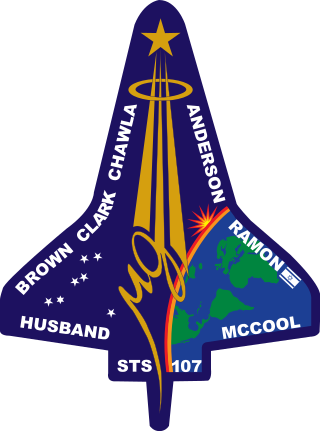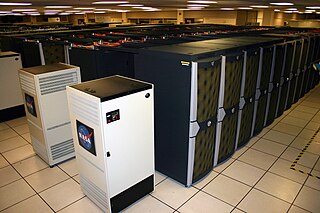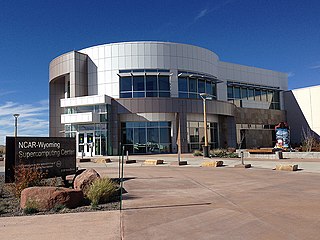
Space Shuttle Columbia (OV-102) was a Space Shuttle orbiter manufactured by Rockwell International and operated by NASA. Named after the first American ship to circumnavigate the upper North American Pacific coast and the female personification of the United States, Columbia was the first of five Space Shuttle orbiters to fly in space, debuting the Space Shuttle launch vehicle on its maiden flight on April 12, 1981. As only the second full-scale orbiter to be manufactured after the Approach and Landing Test vehicle Enterprise, Columbia retained unique features indicative of its experimental design compared to later orbiters, such as test instrumentation and distinctive black chines. In addition to a heavier fuselage and the retention of an internal airlock throughout its lifetime, these made Columbia the heaviest of the five spacefaring orbiters; around 1,000 kilograms heavier than Challenger and 3,600 kilograms heavier than Endeavour. Columbia also carried ejection seats based on those from the SR-71 during its first six flights until 1983, and from 1986 onwards carried an imaging pod on its vertical stabilizer.

The Ames Research Center (ARC), also known as NASA Ames, is a major NASA research center at Moffett Federal Airfield in California's Silicon Valley. It was founded in 1939 as the second National Advisory Committee for Aeronautics (NACA) laboratory. That agency was dissolved and its assets and personnel transferred to the newly created National Aeronautics and Space Administration (NASA) on October 1, 1958. NASA Ames is named in honor of Joseph Sweetman Ames, a physicist and one of the founding members of NACA. At last estimate NASA Ames had over US$3 billion in capital equipment, 2,300 research personnel and a US$860 million annual budget.
The Earth Simulator (ES) is a series of supercomputers deployed at Japan Agency for Marine-Earth Science and Technology Yokohama Institute of Earth Sciences.

Kalpana Chawla was an Indian-born American astronaut and aerospace engineer who was the first woman of Indian origin to fly to space. She first flew on Space Shuttle Columbia in 1997 as a mission specialist and primary robotic arm operator aboard STS-87.

On Saturday, February 1, 2003, Space Shuttle Columbia disintegrated as it reentered the atmosphere over Texas and Louisiana, killing all seven astronauts on board. It was the second Space Shuttle mission to end in disaster, after the loss of Challenger and crew in 1986.

Laurel Blair Clark was a NASA astronaut, medical doctor, United States Navy captain, and Space Shuttle mission specialist. She died along with her six fellow crew members in the Space Shuttle Columbia disaster. Clark was posthumously awarded the Congressional Space Medal of Honor.

Columbia was a supercomputer built by Silicon Graphics (SGI) for the National Aeronautics and Space Administration (NASA), installed in 2004 at the NASA Advanced Supercomputing (NAS) facility located at Moffett Field in California. Named in honor of the crew who died in the Space Shuttle Columbia disaster, it increased NASA's supercomputing capacity ten-fold for the agency's science, aeronautics and exploration programs.
NAS Parallel Benchmarks (NPB) are a set of benchmarks targeting performance evaluation of highly parallel supercomputers. They are developed and maintained by the NASA Advanced Supercomputing (NAS) Division based at the NASA Ames Research Center. NAS solicits performance results for NPB from all sources.

The NASA Advanced Supercomputing (NAS) Division is located at NASA Ames Research Center, Moffett Field in the heart of Silicon Valley in Mountain View, California. It has been the major supercomputing and modeling and simulation resource for NASA missions in aerodynamics, space exploration, studies in weather patterns and ocean currents, and space shuttle and aircraft design and development for almost forty years.
The Pittsburgh Supercomputing Center (PSC) is a high performance computing and networking center founded in 1986 and one of the original five NSF Supercomputing Centers. PSC is a joint effort of Carnegie Mellon University and the University of Pittsburgh in Pittsburgh, Pennsylvania, United States.

The SGI Origin 2000 is a family of mid-range and high-end server computers developed and manufactured by Silicon Graphics (SGI). They were introduced in 1996 to succeed the SGI Challenge and POWER Challenge. At the time of introduction, these ran the IRIX operating system, originally version 6.4 and later, 6.5. A variant of the Origin 2000 with graphics capability is known as the Onyx2. An entry-level variant based on the same architecture but with a different hardware implementation is known as the Origin 200. The Origin 2000 was succeeded by the Origin 3000 in July 2000, and was discontinued on June 30, 2002.

Pleiades is a petascale supercomputer housed at the NASA Advanced Supercomputing (NAS) facility at NASA's Ames Research Center located at Moffett Field near Mountain View, California. It is maintained by NASA and partners Hewlett Packard Enterprise and Intel.
The National Center for Computational Sciences (NCCS) is a United States Department of Energy (DOE) Leadership Computing Facility that houses the Oak Ridge Leadership Computing Facility (OLCF), a DOE Office of Science User Facility charged with helping researchers solve challenging scientific problems of global interest with a combination of leading high-performance computing (HPC) resources and international expertise in scientific computing.
New York Blue is an 18 rack Blue Gene/L and a 2 rack Blue Gene/P massively parallel supercomputer based on the IBM system-on-chip technology. It is located in the New York Center for Computational Sciences (NYCCS). The supercomputer is owned by Stony Brook University and is located at Brookhaven National Laboratory in Upton, Long Island, New York. The funds for this machine were provided by the New York state, with the leadership of the NYS Assembly. It began operating on July 15, 2007, when it was the fifth most powerful supercomputer dedicated to general research. According to Stony Brook provost Robert McGrath, it would also rank within the top 10 when including supercomputers available only for military research. The renovation of laboratory space was supported by the New York state and U.S. DOE fund. As of June 2010, the Blue Gene/L was ranked 67th in the Top 500 supercomputing rankings. Together with the Computational Center for Nanotechnology Innovations at Rensselaer Polytechnic Institute, New York Blue provides New York state with more computing power available for general research than any state in the nation.

Yellowstone was the inaugural supercomputer at the NCAR-Wyoming Supercomputing Center (NWSC) in Cheyenne, Wyoming. It was installed, tested, and readied for production in the summer of 2012. The Yellowstone supercomputing cluster was decommissioned on December 31, 2017, being replaced by its successor Cheyenne.

G. Scott Hubbard is a physicist who has been engaged in space-related research as well as program, project and executive management for more than 45 years including 20 years with NASA, culminating as director of NASA's Ames Research Center. As of 2012, Hubbard chairs SpaceX Safety Advisory Panel, he previously served as the NASA representative on the Columbia Accident Investigation Board, was NASA's first Mars program director and restructured the Mars program in the wake of mission failures.

Endeavour is a shared memory supercomputer at the NASA Advanced Supercomputing (NAS) Division at NASA Ames Research Center. It was named after the Space Shuttle Endeavour, the last orbiter built during NASA's Space Shuttle Program.

The NCAR-Wyoming Supercomputing Center (NWSC) is a high-performance computing (HPC) and data archival facility located in Cheyenne, Wyoming, that provides advanced computing services to researchers in the Earth system sciences.
Electra is a petascale supercomputer located at the Ames Research Center facility, manufactured by Hewlett Packard Enterprise in 2016 and commissioned at 2017. This is the first modular supercomputer prototype designed by NASA, as part of its research on making supercomputing more efficient and environment-friendly. Its research resulted in the Aitken supercomputer, destined for Moon landing and related research.












